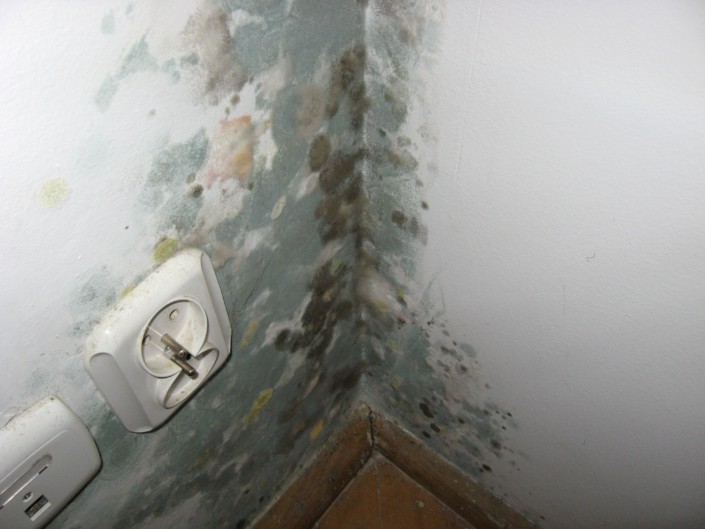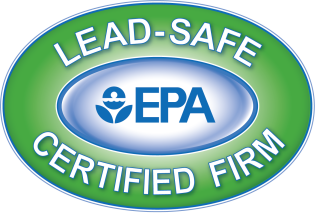Black mold can cause numerous health problems. Come learn about the health effects of black mold on adults, children, and pets, and what you can do about it!
Blog information is NOT intended to provide or replace medical advice. NO information on this site should be used to diagnose, treat, prevent or cure any disease or condition.
*As an Amazon Associate we earn from qualifying purchases.
Suggestions for products to use are just that, suggestions. You know yourself and your home best. Please do your own research on any product you use in your home or on your skin, and learn all the facts for yourself. Thank you.
This past year (2020-2021), most of us have spent more time at home than ever. Avoiding contracting the COVID-19 virus has caused many of us to work at home, go to school at home, and even shop for groceries from home. The goal of course has been to stay healthy.
But, what if our homes are making us sick? They just might be. You could have mold growing unseen in your home. Black mold can cause numerous health problems. At Branch Environmental, our company slogan is that “Nobody should live or work in a building that makes them sick!” In this post, we describe health issues from black mold, and how it affects adults, children, and pets.
WHAT IS BLACK MOLD? WHERE DOES IT LIVE?

From the arctic to equator and all the places in between, mold lives literally everywhere. Molds are fungi, and grow from microscopic spores that are everywhere in the air. Molds are important for recycling organic matter (such as leaves). The recycling process they perform returns nutrients to the soil, and is important for plants to grow. In order to grow, molds need four things to grow: oxygen, moisture, a food source, and the right temperature range (ideal is between 77 – 86F).
Food Sources
Molds grow inside of their food sources. They penetrate deeply into drywall, carpets, floors, cabinets, underneath kitchen and bathroom sinks, etc. Anything with carbohydrates in it could be considered a food source for molds.
Moisture
I think we all agree that oxygen and temperature are factors we can’t control when it comes to mold. So, let’s talk about what we can control – moisture.
Moisture is the one thing you can reasonably control when it comes to mold. A dry home equals a home with much less mold growth. Keeping areas dry, especially areas that use water frequently (like bathrooms), is important to prevent mold growth.
How Fast Do Molds Grow?
Moisture behind baseboards and cabinets, wet carpet tack strips, in crawl spaces and attics, basements, and other hard to reach areas are a ticking mold time bomb. Once enough moisture is present, molds can begin to grow in less than 48 hours! Even with fans going and mopping up the water, it may not be enough to prevent mold growth.
DOES BLACK MOLD REALLY CAUSE HEALTH PROBLEMS?
In one word… Yes.
Mold is most often associated with allergies and asthma, but mold is much more menacing than people know. While all molds have the potential to cause irritation and allergy symptoms, molds can also cause much more dangerous health problems including: fungal poisoning from mycotoxins to mental health issues.
Mold hides in places no one ever thinks to look like under cabinets, in crawl spaces, attics, and behind furniture. People may spend weeks, months, and even years fighting illness, and never know what they are really fighting…mold. Many of our customers find us after a recommendation from their doctor, that they may in fact have a mold problem, and not just an illness.
BLACK MOLD – SOMETHING OF A MISNOMER

Before we go any further, let’s clear up the confusion about ‘black mold.’ When you read about ‘toxic black mold’ it is kind of misleading. The thing is… dangerous and toxic mold is not just black, it can be many different colors. Toxic molds can appear to be green, yellow, brown, and black.
All molds have the potential to cause irritation and allergy symptoms. However, some molds can also cause much more dangerous health problems. Some molds, but not all, produce mycotoxins. Not all molds are toxic, but many are. Mycotoxins can cause health problems ranging from poisoning to cancer.Mycotoxins, literally ‘fungus poison’ in Latin, are secondary metabolites that can be produced by molds, and are not living organisms. Mycotoxins are a byproduct of mold. Not all mold spores produce mycotoxins, but some do. So the molds that produce mycotoxins are the ones that could be categorized as toxic or poisonous.
So, where is the line between an allergic mold and a toxic mold? That line is defined by the presence of mycotoxins, and is NOT defined by color. Mycotoxins are invisible and cannot be detected just by looking at the mold growth.
What Do Mycotoxins Do?
These chemical substances can cause many health problems ranging from mild to severe. Even if you are not allergic to mold, you can be affected by mycotoxins.
Mycotoxins can be absorbed by the body in a number of ways including: through the skin, the airways (inhalation), and through the intestinal lining (ingestion). Detrimental health effects caused by mycotoxins can range from “acute poisoning to long-term effects such as immune deficiency and cancer.”2 Chronic disease sufferers, such as people with immunosuppressive disorders or underlying lung disease may be more sensitive to molds and mycotoxins in their environment.4
One of the main ways people and pets become poisoned by mycotoxins is through eating contaminated foods. Foods such as apples, cereal grains, coffee beans, nuts, spices, dog and cat food, and more can become contaminated with fungi that produce mycotoxins.
To learn more about mycotoxins in foods check out the World Health Organization’s article: Mycotoxins.
Did you know that toxic mold can affect your pets as well? To learn more about how mold affects your pets check out our article: Mold and Pets – 10 Things You Most Likely Didn’t Know.
HEALTH EFFECTS OF MOLD – EXPOSURE SYMPTOMS
Headache, health effects of mold
Even for people in good health, exposure to large amounts of mycotoxins and molds can overwhelm the immune system and cause symptoms of poisoning. Mycotoxins can be especially dangerous for people with compromised immune systems. Symptoms that are associated with allergic reactions are highlighted in italics.
- Some of the symptoms associated with mold and mycotoxins can include:
- Chronic burning in the throat and nasal passages
- Coughing, wheezing, and shortness of breath
- Eye irritation – red eyes, blurred vision
- Headache
- Skin rashes
- Fatigue
- Loss of balance
- Dizziness and Disorientation
- Reduced color distinction
- Depression and/or anxiety
- Light sensitivity
- Vertigo
- Feeling lightheaded
- Morning stiffness, joint pain and/or muscle pain
- Muscle weakness
- Slower reaction time
- Poor memory, difficult word finding
- Difficulty concentrating
- Unusual skin sensations, tingling and numbness
- Appetite and mood swings
- Body temperature regulation problems
- Increased urinary frequency, increased sweating (especially at night), or increased thirst
- Abdominal pain, diarrhea, bloating
- Metallic taste in mouth
As you can see, the list is quite long! It is also not a list of symptoms that would immediately point a doctor to a specific illness. Some symptoms (like the symptoms associated with allergies) manifest immediately, but others such as poor color distinction, dizziness, fatigue, poor memory, and difficulty word finding may take months or years to develop.
Please remember that this blog is NOT intended to replace medical advice, diagnosis, or treatment.
Always talk to your doctor about symptoms of any medical condition you are experiencing. It is unlikely to experience all the symptoms listed, but many of these symptoms could be cause for concern. An open dialog with your doctor is important for any medical condition. Ask questions to be sure you understand your diagnosis, treatment, and recovery process.
To learn more about our sources of information, please check out the ‘For More Information’ section at the end of this article.
In the long term, mold can cause dangerous health problems for adults, children, and pets. If you suspect you or family members are suffering from mold exposure, talk to your doctor, pediatrician, or veterinarian.
If you think you need a mold inspection for your home or business, get in touch with us, and we’ll get down to the source. Here at Branch Environmental, we know your health is your priority, and we see each mold inspection as an in-depth investigation.
Adults
Adults that have been exposed to mycotoxins can exhibit symptoms such as disordered brain function, changes in balance, slower blink reflexes, slower reaction times, color discrimination problems, and depression.4R For adults exposed to mold and mycotoxins, scientists have discovered that brain function of adults exposed to mold is abnormal or significantly decreased compared to those who have not been exposed to mold.4R Remember that even if you are NOT allergic to mold you can be affected by mycotoxins.
To learn more about how mold affects the brain check out our post: Mold and Mycotoxins: Effects on the Brain and Nervous System in Adults.
Children
Children that grow up in homes with mold are more likely to suffer from allergies and asthma than children that live in homes without mold. Mold also appears to affect cognitive or brain development in children.
A scientific research group from Poland studied the effects of mold on children’s IQ development from birth to six years old.10R IQ scores were used to determine intelligence level at 6 years old. Study participants were compared to children who lived in homes without mold. They found that children who lived in homes with mold, especially those who were exposed to mold for longer periods of time, had triple the risk of low IQ scoring.10R Even accounting for differences in maternal education level, students who had lived in homes with mold for longer periods of time had a much higher risk of lower IQ scores. There are two different ways pets can be exposed to mold including: ingestion (eating mold) and inhalation (breathing mold in the air). Just like people, pets can also have allergies to mold.
Typical allergy symptoms in pets include:
- Respiratory symptoms like sneezing, breathing difficulties, coughing, wheezing, and discharge from the eyes and nose
- Excessive licking or scratching which can lead to fur loss and painful sores
- Lack of energy
- Symptoms Caused by Toxic Mold in Pets
While all molds have the potential to cause irritation and allergy symptoms, some molds can also cause much more dangerous health problems. More dangerous symptoms of mold exposure can also be attributed to mold due to the presence of mycotoxins. When exposed to mycotoxins, pets can exhibit symptoms such as:
- bleeding from the mouth or nose
- neurological problems due to mycotoxins (acting strangely)
- digestive problems, such as vomiting and stool changes, including damage to the gastrointestinal tract
- weakened immunity to other secondary diseases
- When pets either ingest mold with their food or inhale mold through the nose, they can exhibit these types of symptoms. Unfortunately, symptoms of mold exposure can mimic symptoms of other health conditions making it sometimes difficult to diagnose mold exposure.
- sick dog at the vet, health effects of mold
The most important thing to remember if your pet is exhibiting these symptoms is to get them to the veterinarian right away! The effects of mold can be reduced if treated early. However, in the long term exposure is much more serious, and can lead to very dire consequences including organ failure.
As you can see, living in a home or working in a home or building with mold growth is detrimental for the health of adults, children, and pets. Studies have shown that once buildings are repaired the health of the people begins to be restored.6,7R It is difficult to improve your health if you live or work in a building with mold without remediation or mold removal.
MOLD INSPECTIONS
Mold Inspection
If you are suffering from mold exposure, the best place to start is with a paid Indoor Air Quality Assessment or Mold Inspection. An Indoor Air Quality Assessment, like ours, will help you get to the root of your problem, and find all the areas in your home where mold is lurking.
At Branch Environmental, we treat each inspection as an investigation. All areas of your home are searched from top to bottom. Mold can lurk everywhere, so we search everywhere.
When the inspection is complete, the mold inspector will define the extent of the necessary work to remove the mold, and what may or may not need to be done. Your inspector should talk you through all your options, and tailor a plan that fits your needs and your budget.
Before hiring a mold inspection or removal company, be sure to check out our post: How to Choose the Best Mold Removal Company. The company you hire for an Indoor Air Quality Assessment should charge you for this service. Never expect a company that offers a ‘free’ inspection to do a good job finding all the mold!
Our post describes in detail what you need to know and what you should expect from a mold inspection and removal company. If the company you interview doesn’t know the answer to the questions in our article, you don’t want to hire them!
DIY VS. PROFESSIONAL MOLD REMOVAL
Black Mold vs. Mildew – What’s the difference?
Once you have had a home inspection, you may wonder if professional help is really necessary. Customers often ask us, “Can I clean the mold myself or do I need a professional?” Our answer depends several factors including:
- how extensive the mold problem is
- what building materials, furnishings, and belongings are affected
- where the mold is located
- whether or not you mind being in confined spaces such as your crawlspace, basement, or attic
If you’re familiar with our blog, you know that the first thing to do when cleaning mold is to fix the moisture problem that led to the mold growth. Until you fix the moisture problem, mold will continue to grow and spread.
It’s time to call in the professionals when:
- you smell a musty odor in your home you can’t identify
- there is an area of mold larger than 10 square feet
- you have health problems associated with mold
Mold is great at hiding in hard to detect locations such as in drywall and insulation. If the area of mold covers more than about 10 square feet, there is a good chance the mold problem is more than an isolated issue. If the area of mold is less than 10 square feet, you may be able to handle it yourself. To get all the details check out our post: Cleaning Mold: DIY vs. Professional.
HOW DO YOU CHOOSE A MOLD REMOVAL COMPANY?
Best Mold Removal Companies Near Me
Have you ever had mold removed from your home? Do you know what to ask mold removal companies? What do mold removal companies really do?
As a mold removal company, we know what you should expect and what the industry standards should be. Some of our competitors offer “free” mold inspections. Which basically means that the inspector shows up and hands over a price to fix a symptom, without truly knowing the nature of the problem. The primary reason that we charge for our mold inspections is the time and resources that go into each one.
If you think you might have a mold problem, you’re far better off with a thorough inspection like ours. We analyze the symptoms to determine the root cause of your problem, and will only recommend solutions that will solve the actual problem.
Especially if you live outside our service area, check out our post: How to Choose the Best Mold Removal Company. We let you know what you should expect and what the industry standards should be. If the company you interview doesn’t know the answer to the questions in our article, you don’t want to hire them!
THE BRANCH DIFFERENCE

At Branch Environmental, our company slogan is that “Nobody should live or work in a building that makes them sick!” When we perform an inspection, we work tirelessly to determine the root cause of your problem.
We know your health is your priority, and we see each mold inspection as an in-depth investigation. If you think you need a mold inspection, get in touch with us, and we’ll get down to the source.
Call Branch Environmental. We’re experts not only at mold removal, but at determining and remediating the underlying causes. From hidden mold sources to major contaminants, we can identify exactly what is going on in your home and rid it of environmental toxins, often for good.

